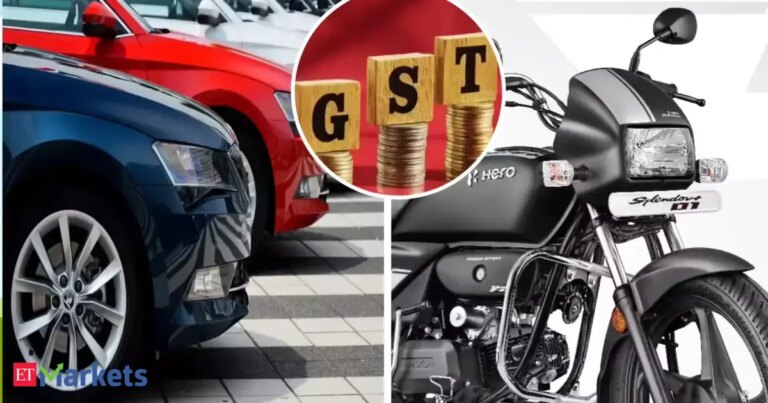India’s auto stocks have garnered significant attention in recent months, driven by optimism around the GST reforms and festive boom. Yet, the latest shareholding data for the September quarter shows a clear split in sentiment. While mutual funds accumulated, retail investors chose to be wary.
Out of the 15 stocks across Nifty Auto and components basket, retail shareholding slipped in 12 of them June and September. In Maruti Suzuki, retail investors trimmed holdings by nearly half a percentage point, while foreign institutional investors (FIIs) added more shares, buoyed by expectations of rising small-car demand after the GST rate cuts.
Tata Motors saw a similar pattern, where retail participation edged lower. Mahindra & Mahindra was the only outlier where smaller investors increased their exposure.
In the two-wheeler space, Hero MotoCorp and Bajaj Auto also recorded a small but notable decline in retail shareholding. Overall, the trend is clear — the domestic institutional crowd has turned optimistic, but retail investors are staying cautious.
It is also interesting to note that the retail investors’ restraint matches that with the foreign investors. FIIs have trimmed holdings in Bajaj Auto, M&M, Samvardhana, Sona BLW and Tata Motors.
Live Events
One reason for this, analysts said, could be the risks of a slowdown once the festive tailwinds fade. The enthusiasm among big investors stems largely from the sweeping tax rationalisation under GST 2.O.Vikas Gupta, CEO and Chief Investment Strategist at OmniScience Capital, believes the market may have gone too far too soon. “The growth outlook for the auto and auto-component space is high in the near term triggered by the GST reforms, but unlikely to be higher than low double digits over the long term,” he said.”Wherever there is even slightly higher growth visibility, valuations have already incorporated that. If growth slips below expectations, there could be downward pressure on share prices.”
Brokerages tracking institutional sentiment echo that uncertainty. In its Singapore roadshow, Motilal Oswal said most FIIs had turned positive on the Indian automobile space after the GST cuts but continued to debate whether demand would sustain from January onward.
“The key question lingering on investors’ minds is whether demand will sustain beyond the festive season once discounts are withdrawn,” the brokerage noted.
However, there are still reasons to be optimistic, especially in the components space. The reforms cut the GST rate on small cars, two-wheelers up to 350cc, and commercial vehicles from 28% to 18%, and brought all auto components under a single 18% rate.
The simplification has lowered vehicle prices, will likely boost affordability, and make compliance easier for manufacturers. This has sparked record demand during the festive season and revived hopes of a longer-term consumption revival.
“The lower GST rates have made vehicles more affordable for a wider segment of consumers, and the unified 18% rate for components will help companies like Motherson Sumi, Bharat Forge, Uno Minda and Exide Industries through reduced input costs and better supply-chain efficiency,” said Vinit Bolinjkar, Head of Research at Ventura Securities.
The long-term story
Anil Rego, Founder and Fund Manager at Right Horizons PMS, said the GST 2.O changes had “triggered a structural re-rating” for the sector. “Auto components have uniformly moved to 18% GST, eliminating classification disputes and improving supply-chain efficiency,” he said.
“The sector is now positioned for sustained margin expansion, with domestic OEM supplies projected to reach $89 billion from $59 billion by 2030.”
Vipul Bhowar, Senior Director and Head of Equities at Waterfield Advisors, added that the single GST rate offers a valuable structural benefit that will improve long-term competitiveness. “Lower input costs for auto components and stronger market incentives are expected to support industry growth and create more jobs,” he said.
(Disclaimer: Recommendations, suggestions, views and opinions given by the experts are their own. These do not represent the views of the Economic Times)
Images are for reference only.Images and contents gathered automatic from google or 3rd party sources.All rights on the images and contents are with their legal original owners.

